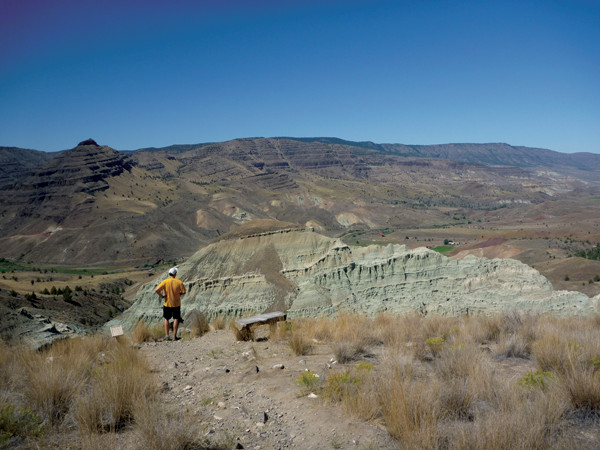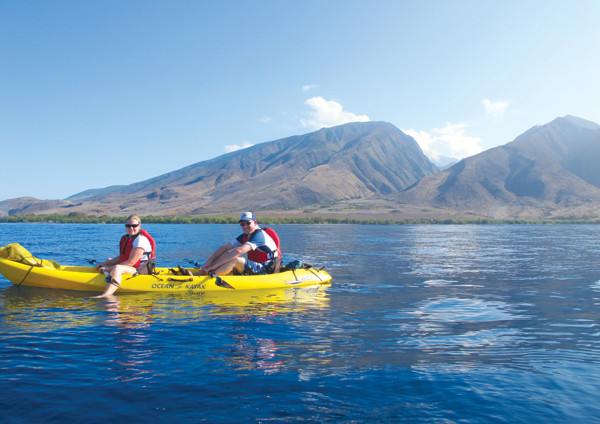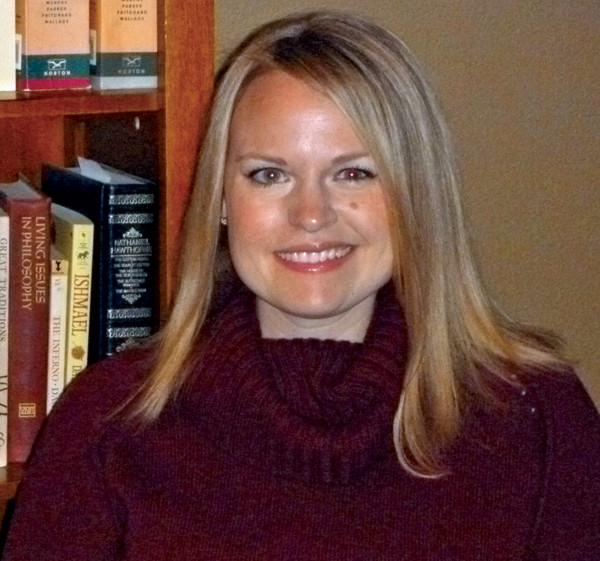
by Megan Sever Monday, November 18, 2013

Hiking around the Sheep Rock Unit at John Day Fossil Beds National Monument in eastern Oregon provides a full day of geologic adventures. Megan Sever

It's also nice to know a little something about the geology of where you vacation, such as when the last eruption on Maui occurred. While on a tour in May, the guides asked, "So, is anyone here a geologist?" I tentatively raised my hand. "Oh no, now she can fact-check what we say," they replied. No need — they had done their homework and knew a lot about the geology of the area! @Griff, Aloha Kayaks Maui

Jim Sever
Earlier this fall, I took a paddleboarding tour along the Willamette River to Willamette Falls near Oregon City, Ore., a Portland suburb famous for marking the end of the Oregon Trail. Willamette Falls, as I learned, is one of the largest waterfalls in the U.S. My tour guides, a couple of young and knowledgeable self-described river rats, explained how the falls were used for hydroelectric power generation and how the locks worked. But they didn’t tell us anything about how or when the falls formed or about the massive basalts responsible for their grandeur.
When the guides found out what I did for a living, they asked if I knew anything about the rocks. Despite my husband rolling his eyes (as he often does when I get excited about explaining some geology-related concept to someone), I explained — as succinctly as I could — how and when the Columbia River flood basalts were emplaced and how erosion worked, especially as it related to the glacial Lake Missoula floods. By imparting a little knowledge to our guides, I hoped they would then pass that along to others. Whether or not they will, I don’t know. But I think it is important for all geologists to know — and pass on — information about their local geology. Call it a grass-roots effort to improve geologic literacy in our hometowns.
Personally, I’ve always been interested in the local geology wherever I’ve lived, whether it was Wisconsin, where I grew up in the one part of the state not glaciated during the last glacial maximum; or Williamsburg, Va., where I learned how the Chesapeake Bay impact crater was still affecting the climate, topography, water and environment in the area 35 million years after it hit; or Washington, D.C., where I explored the Potomac River Valley, including the 550-million-year-old rocks of the stunning Great Falls area. Of course, I passed along this information to anyone who’d listen.
Since moving to Portland a few years ago, I have learned much about the geology of this exceptional area (although I have barely scratched the surface). Just this year, I’ve had occasion to explain to friends and family how the Columbia River Gorge formed and why there are more than three times the number of waterfalls in the gorge on the Oregon side than on the Washington side; if/when Mount Hood and Mount St. Helens might erupt again; how the fossil beds and painted hills at John Day Fossil Beds National Monument formed; why there are so many landslides in Oregon; and why the earthquake insurance on my house increased four-fold this year — and especially why we needed it.
The last item has actually been a bone of contention in my household. When my husband and I received our premium bill early this year and saw it had increased dramatically over last year, I was coincidentally working on an article for EARTH with Chris Goldfinger of Oregon State University, who studies the Cascadia Subduction Zone (see EARTH’s January 2013 feature about “superquakes”). I emailed Chris and jokingly asked, “Are you to blame for this?!” To which he replied, “Um, I may have had something to do with that” — the implication being that his (and others’) research on recurrence rates of large earthquakes along Cascadia, just off the coast of Oregon and Washington, had finally been taken into account by insurance companies. Sure enough, the insurance company confirmed that they had updated their hazard maps for the first time in a decade, and Portland’s risk was far higher than previously thought.
This meant two things, practically speaking: First and foremost, I had to convince my financial-planner husband that paying so much for insurance we were unlikely to ever need was worthwhile. Second, I realized I should probably start mentioning the relevance of earthquake insurance to my friends in the area.
The first task proved far more difficult than the second, but in the end, my husband relented when I showed him the newest hazard maps and statistics about the size and frequency of earthquakes that could hit here. (In part, I think he was just reluctant about the inevitable “I told you so” if a major earthquake were to hit and we didn’t have insurance.) The second task involved simply informing friends of what I had learned. I will never suggest to friends and family how to spend their money. But in explaining what the geology of our region implies — potentially magnitude-9 earthquakes — I’m increasing their geologic literacy. What they choose to do with that information is up to them.
I once had a professor say he wanted to “make us annoying with knowledge.” I loved that idea and have tried to maintain it as a mantra throughout my life. It’s up to us to make ourselves “annoying with knowledge,” so we can pass that knowledge along to friends, family or anyone who’ll listen. Who knows what that person may then pass along? Many of my family members who have nothing to do with the geosciences professionally have told me they’ve passed along some tidbit they learned after reading it in EARTH. That makes me proud not only because it’s my magazine, but also because together we are increasing geologic literacy.
As we raise the level of geologic and general science literacy, hopefully we’ll even reach those in power and, as a society, we’ll start making more informed decisions about everything from earthquake hazards to energy development to climate change. In the meantime, though, maybe we can just help make our own friends — and maybe their friends, and their friends’ friends — annoying with a little bit of knowledge.
© 2008-2021. All rights reserved. Any copying, redistribution or retransmission of any of the contents of this service without the expressed written permission of the American Geosciences Institute is expressly prohibited. Click here for all copyright requests.